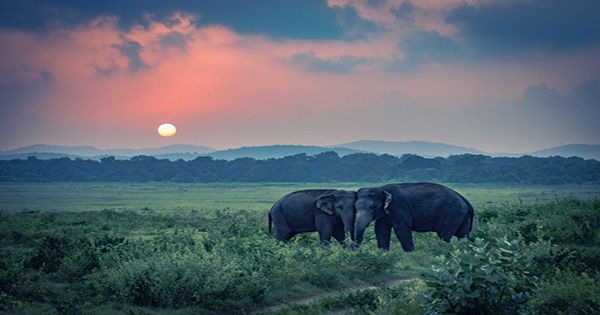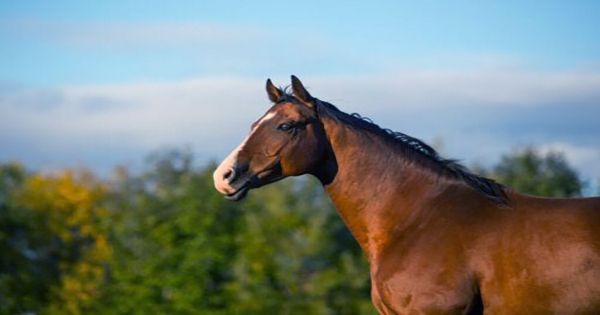The most pristine parts of the Amazon rainforest devoid of direct human contact are being impacted by human-induced climate change, according to new research by LSU scientists.
New assessments of data collected over the last four decades reveal that not only has the number of sensitive resident birds in the Amazon rainforest decreased but that the body size and wing length of most analyzed species have also changed. During the dry season, from June to November, these physical changes in the birds correspond to increasingly hot and dry weather.
“Even in the middle of this pristine Amazon rainforest, we are seeing the global effects of climate change caused by people, including us,” said Vitek Jirinec, LSU alumnus (Ph.D. ’21), associate ecologist at the Integral Ecology Research Center and lead author to this study published in the journal Science Advances.
Over numerous generations, birds in the Amazon jungle have shrunk and their wings have grown longer, indicating a reaction to changing environmental conditions that may include new physiological or nutritional problems.
This is the first study to find these changes in non-migratory birds’ body size and form, ruling out the possibility of other causes influencing these physiological changes.
Over the course of 40 years of fieldwork in the world’s largest rainforest, Jirinec and colleagues analyzed data on over 15,000 individual birds that were captured, measured, weighed, and marked with a leg band before being released. Since the 1980s, nearly all of the birds’ bodies have shrunk in mass or become lighter, according to the statistics.
This is undoubtedly happening all over and probably not just with birds. If you look out your window, and consider what you’re seeing out there, the conditions are not what they were 40 years ago and it’s very likely plants and animals are responding to those changes as well. We have this idea that the things we see are fixed in time, but if these birds aren’t fixed in time, that may not be true.
Philip Stouffer
Every decade, the majority of bird species lost roughly 2% of their body weight. The population of an average bird species that weighed around 30 grams in the 1980s currently weighs around 27.6 grams. How significant is this?
“These birds don’t vary that much in size. They are fairly fine-tuned, so when everyone in the population is a couple of grams smaller, it’s significant,” said co-author Philip Stouffer, who is the Lee F. Mason Professor in the LSU School of Renewable Natural Resources.
Because the data set spans a huge area of the rainforest, the alterations in the bodies and wings of birds across communities aren’t limited to a single location, implying that the phenomena is widespread.
“This is undoubtedly happening all over and probably not just with birds,” Stouffer said. “If you look out your window, and consider what you’re seeing out there, the conditions are not what they were 40 years ago and it’s very likely plants and animals are responding to those changes as well. We have this idea that the things we see are fixed in time, but if these birds aren’t fixed in time, that may not be true.”
The researchers looked into 77 different rainforest bird species that reside from the cool, dark forest floor to the warmer, sunlit midstory. The birds that live in the highest portion of the midstory, where they are most exposed to heat and drier conditions, saw the most drastic changes in body weight and wing size, according to the researchers. These birds also have a higher rate of flight than forest-dwelling species.
The theory is that these birds have adapted to a hotter, drier climate by lowering their wing loading, making them more effective in flying. Consider the difference between a fighter jet with a large body and short wings, which requires a lot of energy to fly rapidly, and a glider plane with a small body and long wings, which can soar with less energy.
To keep aloft, a bird with a higher wing loading must flap its wings quicker, which uses more energy and generates more metabolic heat. In a warming climate, reducing body weight and increasing wing length leads to more efficient resource usage while also keeping cool.
Much of the study that identified the variation among the bird groups over time was done by LSU alumnus Ryan Burner (Ph.D. ’19). The study’s second author is Burner, who is now a research wildlife biologist with the United States Geological Survey’s Upper Midwest Environmental Sciences Center.
The subject of Amazonian birds’ future ability to cope with rising hotter and drier environments, particularly during the dry season, remains unsolved. The same question can be asked of a variety of locales and animals that exist on the outskirts of even more extreme environmental conditions.
“There may be other researchers in other places who have relevant data from the 1970s and 1980s that could be compared to modern data, because the bird banding protocol we used is pretty standard. So if you measure mass and wing, maybe there will be more datasets that will emerge and we’ll be able to get more of an idea of the variation across space and how it might be changing in different systems,” Stouffer said.
















